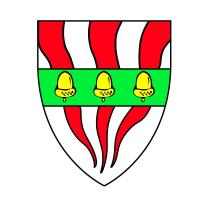Silliman College was built on land that was home to the Algonquian Indians, dating back as far as 8000 years ago. This tribe, later renamed by the British as the Quinnipiac Indians, suffered significant population losses due to diseases inflicted upon them by settlers who came to the area. By 1638, with dwindling numbers, the Quinnipiac Indians handed over a considerable portion of their land to the British, who then founded the Colony of New Haven. The site of Silliman College was the actual location where the Colony was incorporated in 1639 and it became part of the City’s nine-square plan.
Yale’s presence at the site can be traced to 1847, when it established the Sheffield Scientific School. By 1933, the School was incorporated into Yale College and named for Benjamin Silliman who, in 1804, was the first to deliver science lectures at Yale.
 Benjamin Silliman, Yale Class of 1796, (1779-1864) was one of America’s pioneers in science. Although Silliman graduated knowing nothing of the natural sciences, in 1802 President Timothy Dwight asked him to become Yale’s first science professor–to teach chemistry and natural history, so as to avoid hiring a foreigner with whom Puritan manners and morals might not sit well. Silliman proved to be eminently capable and delivered Yale’s first science lecture in 1804. Soon afterward, President Dwight sent him to Europe to purchase scientific equipment, books for the College Library, and a cabinet of two thousand minerals to begin the study of mineralogy at Yale. After his return, he played a leading role in the foundation of the Yale Medical School, the Peabody Museum, and the American Journal of Science, a scientific periodical still published today.
Benjamin Silliman, Yale Class of 1796, (1779-1864) was one of America’s pioneers in science. Although Silliman graduated knowing nothing of the natural sciences, in 1802 President Timothy Dwight asked him to become Yale’s first science professor–to teach chemistry and natural history, so as to avoid hiring a foreigner with whom Puritan manners and morals might not sit well. Silliman proved to be eminently capable and delivered Yale’s first science lecture in 1804. Soon afterward, President Dwight sent him to Europe to purchase scientific equipment, books for the College Library, and a cabinet of two thousand minerals to begin the study of mineralogy at Yale. After his return, he played a leading role in the foundation of the Yale Medical School, the Peabody Museum, and the American Journal of Science, a scientific periodical still published today.
In 1852, Silliman was instrumental in the founding of the Yale School of Engineering, a pioneering event in professional scientific education in the United States. To honor such a towering figure in the history of science at Yale and in America, our college was named after Benjamin Silliman.
In February 2024, Yale released “Yale and Slavery: A History” by David Blight with the Yale and Slavery Research Project. The book is a historical examination that uncovers many pieces of Yale’s ties to slavery in the early period of the university’s 300+ year history, and it provides important information about prominent figures in Yale’s early history, including Benjamin Silliman, and his involvement with slavery. Silliman College is a diverse community of students from all around the world and of varying racial, ethnic, religious, sexual, and gender identities. As a community, we are committed to celebrating this diversity as well as fostering inclusivity for all. While these principles reflect our contemporary values, we would be remiss if we did not acknowledge the participation of Silliman in the oppression of Black people and in the perpetuation of slavery. As current Sillimanders, we reject any and all forms of oppression. We seek to represent the best qualities of human kindness and acceptance and strive to create a community of compassion and understanding.
The book marks a milestone in the Yale and Slavery Research Project, which was launched in 2020 and is part of ongoing Belonging at Yale efforts to create a stronger community. The Yale and Slavery Research Project website (
https://yaleandslavery.yale.edu/) includes a free digital version of the book, information about the university’s commitment to building a stronger community, a timeline and videos of research findings, a mobile app that provides a self-guided tour of sites associated with Yale’s history and legacy of slavery, and ways for the community to respond.
The Sillistory
 Silliman College opened in September 1940. It was the last of the original ten Yale residential colleges to be completed. The Vanderbilt-Sheffield dormitories and Byers Hall (now the Common Room, Dining Hall, Sillibrary, and Head of College’s and Dean’s Offices), dating from the early 1900s, were retained in the plans. All of the brick structures, including the Head of College’s House, were built between 1938 and 1940.
Silliman College opened in September 1940. It was the last of the original ten Yale residential colleges to be completed. The Vanderbilt-Sheffield dormitories and Byers Hall (now the Common Room, Dining Hall, Sillibrary, and Head of College’s and Dean’s Offices), dating from the early 1900s, were retained in the plans. All of the brick structures, including the Head of College’s House, were built between 1938 and 1940.
Over the years, our college has evolved from a dormitory intended for science students to a diverse yet cohesive community. Sparing its freshmen from living on Old Campus, Silliman is the largest in area of all the colleges. Our building boasts a tremendous array of facilities, including a movie theater, media center, art gallery, library, kitchen, aerobics and dance studio, art studio, basketball court, weight and fitness room, sound studio, game room, and a buttery.
The Coat of Arms
 The colors in Silliman’s seal refer to the four elements of the ancient philosophers: red represents fire; white, air and water; and green, the earth. It also carries the golden acorns from the family crest of Frederick W. Vanderbilt, Yale Class of 1876, whose bequest funded Silliman’s construction. Because of its legendary associations with fire, the salamander was selected as the college symbol.
The colors in Silliman’s seal refer to the four elements of the ancient philosophers: red represents fire; white, air and water; and green, the earth. It also carries the golden acorns from the family crest of Frederick W. Vanderbilt, Yale Class of 1876, whose bequest funded Silliman’s construction. Because of its legendary associations with fire, the salamander was selected as the college symbol.
 Benjamin Silliman, Yale Class of 1796, (1779-1864) was one of America’s pioneers in science. Although Silliman graduated knowing nothing of the natural sciences, in 1802 President Timothy Dwight asked him to become Yale’s first science professor–to teach chemistry and natural history, so as to avoid hiring a foreigner with whom Puritan manners and morals might not sit well. Silliman proved to be eminently capable and delivered Yale’s first science lecture in 1804. Soon afterward, President Dwight sent him to Europe to purchase scientific equipment, books for the College Library, and a cabinet of two thousand minerals to begin the study of mineralogy at Yale. After his return, he played a leading role in the foundation of the Yale Medical School, the Peabody Museum, and the American Journal of Science, a scientific periodical still published today.
Benjamin Silliman, Yale Class of 1796, (1779-1864) was one of America’s pioneers in science. Although Silliman graduated knowing nothing of the natural sciences, in 1802 President Timothy Dwight asked him to become Yale’s first science professor–to teach chemistry and natural history, so as to avoid hiring a foreigner with whom Puritan manners and morals might not sit well. Silliman proved to be eminently capable and delivered Yale’s first science lecture in 1804. Soon afterward, President Dwight sent him to Europe to purchase scientific equipment, books for the College Library, and a cabinet of two thousand minerals to begin the study of mineralogy at Yale. After his return, he played a leading role in the foundation of the Yale Medical School, the Peabody Museum, and the American Journal of Science, a scientific periodical still published today. Silliman College opened in September 1940. It was the last of the original ten Yale residential colleges to be completed. The Vanderbilt-Sheffield dormitories and Byers Hall (now the Common Room, Dining Hall, Sillibrary, and Head of College’s and Dean’s Offices), dating from the early 1900s, were retained in the plans. All of the brick structures, including the Head of College’s House, were built between 1938 and 1940.
Silliman College opened in September 1940. It was the last of the original ten Yale residential colleges to be completed. The Vanderbilt-Sheffield dormitories and Byers Hall (now the Common Room, Dining Hall, Sillibrary, and Head of College’s and Dean’s Offices), dating from the early 1900s, were retained in the plans. All of the brick structures, including the Head of College’s House, were built between 1938 and 1940. The colors in Silliman’s seal refer to the four elements of the ancient philosophers: red represents fire; white, air and water; and green, the earth. It also carries the golden acorns from the family crest of Frederick W. Vanderbilt, Yale Class of 1876, whose bequest funded Silliman’s construction. Because of its legendary associations with fire, the salamander was selected as the college symbol.
The colors in Silliman’s seal refer to the four elements of the ancient philosophers: red represents fire; white, air and water; and green, the earth. It also carries the golden acorns from the family crest of Frederick W. Vanderbilt, Yale Class of 1876, whose bequest funded Silliman’s construction. Because of its legendary associations with fire, the salamander was selected as the college symbol.